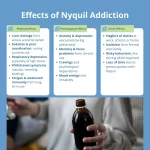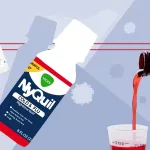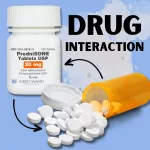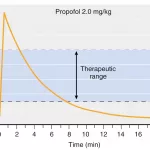Hey there! If you’ve landed on this page, chances are you (or someone you love) are curious about Revlimid – the brand name for lenalidomide – and exactly how it fights cancer. Let’s skip the textbook fluff and dive straight into the heart of the matter. By the end of this read, you’ll know what the drug does inside your cells, why it can start showing results in weeks, and how to stay safe while taking it. Grab a coffee, settle in, and let’s chat.
Quick Answer Overview
TL;DR: Revlimid binds a protein called cereblon (CRBN), hijacking the cell’s own “junk‑removal” machinery (the CRL4CRBN E3 ubiquitin ligase). This forces the machinery to tag cancer‑supporting proteins — IKZF1/3 in multiple myeloma or CK1α in del(5q) myelodysplastic syndrome — for destruction. When those proteins disappear, the malignant cells stop growing and eventually die.
Why It Matters
Multiple myeloma (MM) and certain myelodysplastic syndromes (MDS) can feel like invisible enemies that silently hijack your bone marrow. Revlimid is one of the few oral agents that won’t just “slow” the disease, but actually rewires the cancer cell’s internal wiring. Understanding the Revlimid mechanism helps you feel more in control of your treatment journey, especially when you’re deciding on dosage, timing, or weighing side‑effects.
According to the FDA pharmacology review, the drug is approved for MM, transfusion‑dependent anemia in low‑ or intermediate‑1‑risk MDS with del(5q), mantle‑cell lymphoma, and several other blood cancers. Knowing why it works the way it does explains why the same pill can be used for such different conditions.
Core Science Overview
CRL4CRBN – the Cellular Recycling Truck
Think of every cell as a bustling city. Proteins that have outlived their usefulness are like old trash that needs collection. The CRL4CRBN complex is the city’s recycling truck: it grabs unwanted proteins, tags them with a tiny “ubiquitin” label, and shuttles them to the proteasome (the landfill) where they’re broken down.
Lenalidomide’s Secret Parking Spot on Cereblon
Lenalidomide (Revlimid) slides into a specific pocket on cereblon, a key subunit of that recycling truck. By doing so, it changes the truck’s “delivery address” – suddenly, proteins that were previously ignored become high‑priority trash. In MM, the new targets are the transcription factors IKZF1 and IKZF3; in del(5q) MDS, the target is CK1α.
This clever hijacking was first described in a seminal study by Fink et al., 2015. The researchers showed that lenalidomide reprograms CRL4CRBN to flag IKZF1/3 for destruction, which in turn down‑regulates MYC and IRF4—two proteins that keep myeloma cells alive and proliferating.
Targeted Degradation in Multiple Myeloma
IKZF1 (Ikaros) and IKZF3 (Aiolos) act like the “master conductors” of a gene‑expression orchestra that tells myeloma cells to grow. When Revlimid forces their removal, the orchestra falls silent, leading to cell‑cycle arrest and apoptosis (a fancy word for programmed cell death). The downstream effect is a steep drop in the levels of MYC and IRF4, both essential for survival of malignant plasma cells.
Targeted Degradation in del(5q) Myelodysplastic Syndrome
In MDS patients with a deletion of the long arm of chromosome 5 (the “5q‑” abnormality), the gene CK1α is already present at half the usual dose. Revlimid’s binding to cereblon nudges the ubiquitin ligase to tag this already‑scarce protein for destruction, pushing the diseased cells over the edge while sparing most healthy cells that have a normal CK1α reserve.
Secondary Pharmacodynamics – Immune Boost & Anti‑Angiogenesis
Beyond the hard‑core degradation, Revlimid also whispers to the immune system. It enhances the activity of natural killer (NK) cells and T‑cells, helping the body’s own defenses recognize and attack cancer. Moreover, it tampers with blood‑vessel formation (angiogenesis), starving tumors of nutrients. These “bonus” actions explain why Revlimid works well in combination with dexamethasone or monoclonal antibodies like rituximab.
Pharmacokinetics Snapshot
After an oral dose, Revlimid is absorbed quickly (peak concentrations in about 1‑2 hours). It’s metabolized primarily by the liver via CYP3A4 and excreted in urine and feces. The half‑life ranges from 2.5 to 5.5 hours, which is why it’s taken once daily. Steady‑state levels are typically reached after 3‑5 days of consistent dosing.
When It Starts
One of the biggest questions patients ask is, “How long before I feel the benefits?” The answer depends on the disease, the starting dose, and individual biology.
Onset in Multiple Myeloma
Clinical trials show a median time to partial response of 1–2 months, while a complete response often takes 6–12 months. You may notice a drop in monoclonal protein (the “M‑spike”) on lab tests before you feel any physical change.
Onset in del(5q) MDS
Patients often experience an improvement in hemoglobin, neutrophil, or platelet counts within 4–8 weeks. Some report reduced transfusion needs as early as the second cycle.
Factors That Influence Speed
- Disease burden: Higher tumor load may need a few extra cycles to shrink.
- Prior therapies: Heavy pretreatment can slow the response.
- Kidney or liver function: Affects drug clearance and therefore efficacy.
- Adherence: Skipping doses can delay the “start time” and increase resistance risk.
Practical Tips for the Revlimid Start Time
Take your pill at the same time each day, preferably with a light snack to minimize stomach upset. If your doctor prescribed a 28‑day cycle (days 1‑21 on, days 22‑28 off), set a reminder on your phone so the “off‑week” doesn’t slip by unnoticed.
Benefits vs Risks
Major Benefits
- Extended progression‑free survival in MM (up to 2‑3 years in some studies).
- Improved overall survival when used as maintenance after autologous stem‑cell transplant.
- Transfusion independence in many del(5q) MDS patients.
- Favorable oral administration compared to intravenous chemotherapy.
Key Risks & Revlimid Side Effects
Like any powerful therapy, Revlimid carries a baggage of potential side effects. The most common are hematologic—low neutrophils, anemia, and thrombocytopenia. Non‑hematologic issues include fatigue, constipation, rash, and, rarely, thromboembolic events. The drug is also teratogenic (it can cause birth defects), so a strict pregnancy‑prevention program is mandatory.
Monitoring & Mitigation
- Blood counts: Weekly CBCs for the first two cycles, then every 2‑4 weeks once stable.
- Kidney & liver labs: Baseline and periodic checks, especially if you’re on other meds.
- Anticoagulation: If you’re on dexamethasone or have other risk factors, your doctor may prescribe aspirin or a stronger anticoagulant.
- Contraception: Two reliable forms (e.g., IUD + condoms) for both men and women while on Revlimid and for at least four weeks after stopping.
When to Pause or Stop
If neutrophils fall below 500 cells/µL or platelets under 30,000 /µL, the usual protocol is to hold the drug and resume at a reduced dose once counts recover. Persistent grade 3/4 toxicity, severe neuropathy, or a desire to become pregnant are also valid reasons to discontinue.
Real‑World Stories
Let me share a quick vignette. Jenny, 62, was diagnosed with MM three years ago. After induction therapy, her oncologist suggested Revlimid maintenance 10 mg daily. Within six weeks, her lab values steadied, and by month four she felt more energetic than she had in a year. However, a routine check showed her platelets dipped to 28,000 /µL. Her team paused Revlimid, gave her a short steroid burst, and restarted at 5 mg. Six months later, she’s still in remission and has become a vocal advocate for patients navigating the “Revlimid dosage” maze.
Stories like Jenny’s highlight why it’s crucial to stay in touch with your care team, track your side effects, and never hesitate to ask questions.
Dosage & Treatment
Revlimid dosing isn’t one‑size‑fits‑all. Below is a quick comparison of typical regimens for multiple myeloma versus del(5q) MDS.
| Condition | Typical Starting Dose | Cycle Length | Dose Adjustments |
|---|---|---|---|
| Multiple Myeloma (post‑auto‑HSCT) | 10 mg orally daily (Days 1‑21) | 28‑day cycles | Reduce to 5 mg if neutropenia or thrombocytopenia; hold if platelets <30 k/µL |
| Multiple Myeloma (newly diagnosed, in combination) | 25 mg daily (Days 1‑21) + dexamethasone | 28‑day cycles | Lower starting dose for age >75 yr or renal impairment |
| del(5q) Myelodysplastic Syndrome | 10 mg daily (continuous) | Continuous (no off‑week) | Reduce to 5 mg if cytopenias develop; discontinue if severe |
Talk To Your Doctor
Getting the most out of Revlimid isn’t just about swallowing a pill; it’s a partnership. Here’s a quick cheat‑sheet for your next appointment:
- Bring a list of all medications, supplements, and over‑the‑counter drugs.
- Ask about baseline labs you’ll need before starting (CBC, liver enzymes, kidney function).
- Confirm the exact Revlimid start time – morning vs. evening – and whether food matters.
- Discuss contraception methods and the REMS program requirements.
- Clarify the plan for dose reductions if you develop side effects.
- Request written instructions or a printable chart for dose‑adjustment thresholds.
Remember, no question is too small. Your doctor is there to help you navigate the intricacies of Revlimid treatment and to ensure the benefits outweigh the risks for your unique situation.
Wrapping It Up
Revlimid’s brilliance lies in its ability to turn the cell’s own recycling system into a targeted demolition crew. By binding cereblon, it forces the destruction of proteins that myeloma and certain MDS cells desperately cling to for survival. That’s why you can see responses as early as a few weeks, and why the drug has become a cornerstone of modern therapy.
But with great power comes responsibility. Monitoring labs, respecting the pregnancy‑prevention program, and staying alert to blood‑count changes are all part of the safety net that lets you reap the benefits while minimizing the downsides.
If you’re starting Revlimid, or if you’re supporting someone who is, I hope this deep‑dive gives you clarity and confidence. Feel free to share your own experiences in the comments, ask follow‑up questions, or simply let me know how your journey is going. We’re all in this together, and every story adds a little more hope to the community.


















Leave a Reply
You must be logged in to post a comment.